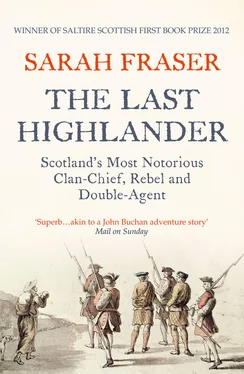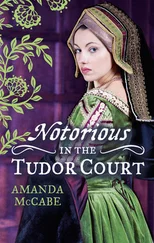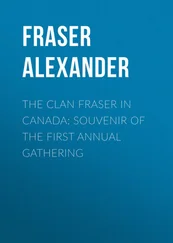There was a problem: even in the terms of the corrupt marriage contract of 1685, the husband had to be a Fraser. So the bridegroom’s father made him into one. Alexander was henceforth ‘Alexander Mackenzie of Fraserdale’. It was a mockery, but it mattered little. The bridegroom got ready to wrest the chieftainship of Clan Fraser from its natural chief.
On 7 March 1702, Lovat borrowed some money from Inverness lairds and merchants and prepared to go to London to raise an action in the House of Lords against this malicious twist of fate. Everything he had tried thus far the Murrays had countered using the might of the state. They had each resorted to force, corruption or violence to crush their opponent. He needed to stop the marriage and clear his name.
The next day at Richmond Park, William III’s horse put his hoof into a molehill, stumbled and threw its rider. The King broke his collar bone and contracted a chest infection. Two weeks later he was dead. Lovat had not even left Inverness.
In March 1702, Princess Anne of Denmark ascended the thrones. The great and good rushed to London to confirm or acquire places in her administration. Lovat headed south to join them, arriving in late April. As he skulked in London to get an entrée to the new Queen’s presence, news came of the marriage of young Amelia Fraser and Alexander Mackenzie. In his absence they had moved into Castle Dounie. The news ‘was decisive in shattering and reshaping his plans’. As if to confirm the blow to his hopes, Queen Anne then raised the Earl of Tullibardine to the Duke of Atholl.
Lovat wrote to Argyll asking for his help. His old patron replied he had to tread carefully; Argyll was not favoured by Anne. He could or would not do anything. ‘I despair of saving myself or my Kindred in this government. So I am resolved to push my fortunes some elsewhere,’ Lovat wrote. ‘The restless enemies of the family of Lovat’, and the ‘indifference’ of his allies and protectors filled him with pain and disillusionment. ‘Though I have now lost my Country and Estate, I do not value my personal loss, for I can have bread anywhere.’ He predicted, though it tortured him to say it, ‘that after I am gone, in ten years there will not be ten Frasers together in Scotland’.
Scarcely eight weeks after Queen Anne ascended the thrones, her ministry opened hostilities against France in what would become known as the War of the Spanish Succession. On Carlos II’s death, Louis claimed the thrones of Spain and the Holy Roman Empire for his grandson. Should he succeed, Spain, her colonial empire, and the loose confederation of European states that made up the Holy Roman Empire, would all fall within Louis XIV’s sphere of influence. Louis would interfere in Spanish colonies and overseas trade through French ambassadors in Madrid. On France’s northern frontier lay the Spanish Netherlands, buffer between France and the United Provinces. Louis would quarter his troops there if he could, and menace the Protestant Low Countries. To the south, if France influenced Spanish-held territories in Italy – such as Naples and Sicily – then Anglo-Dutch Mediterranean trade would be disrupted. In England’s nightmares, Louis XIV achieved his wildest dream, to be the first ‘universal monarch’ – effectively, ruler of the known world. That world would be largely Roman Catholic. The consequences for Protestant Britain and her allies would be dire.
Alone, Lovat concluded he could hope for nothing from Edinburgh or Whitehall and must leave the country for a short while. He lodged for a few weeks in Harwich and thought things over. While there he took a lover, a young woman called Lucy Jones. Little is known of Lucy other than her notes to Lovat. He asked her to write to him as ‘Captain John Campbell’, showing he felt the need to adopt pseudonyms, fearing perhaps that the new Duke of Atholl would hunt him down. She told him she worried about the effects of his ‘melancholy’. She counselled the sort of stoicism that showed she did not know her man very well (‘life has such mixtures, that sure all wise people must despise it. It is the mart for fools and carnaval of knaves’). When he left, Lucy disappeared from the record of his life.
Lovat collected himself. He straightened his cuffs. He must think more flexibly. The weakness of the British succession might be the key to reverse his phase of bad luck. The Stuarts’ quest for Restoration to their inheritance seemed to chime so neatly with his own. If Anne died, her nearest relative was her half-brother, James. Instead of missions to hold the line of the Highland chiefs for William or Anne, perhaps he should sway the clans to support James’s claims? The Scottish Parliament was calling officially for the end of the Union of Crowns. The Jacobites in Edinburgh saw independence as the preliminary to bringing in James. Scotland and England seethed with intrigue, action and possibilities. There must be something in all this for Lovat; his family had always supported the Stuarts.
The blending of the personal and political reinvigorated him. ‘My nature,’ Lovat explained, ‘obliged me to expose my person … in such a ventorious or rather desperate manner that none of my enemies or even my own friends and Relations thought that ever I would be able to accomplish my design,’ to save the Fraser clan from disappearing, ‘but that I must die in the attempting of it.’ Lovat told some clan members and supporters in Inverness-shire that he was going to the Continent for a few months, to gather arms and money, and maybe commissions, to buy support in the Scottish Parliament to vote for independence.
He left his young brother John Fraser as his deputy, with instructions to defend their interests and resist the Mackenzies should they try to encroach. They did. John haunted Stratherrick, still the centre of support for Lovat’s claims. From there John led a band of men into the Aird of Lovat and garrisoned Beauly. He and about thirty minor Fraser lairds and their sons roamed the Aird for months, threatening those who looked likely to accept the new incumbents at Dounie. When the government at last forced the Atholls to recall their soldiers, much of Fraser country was laid waste. It seemed to Lovat, as he prepared to leave, that all he had predicted was fast coming to pass. But he dared stay no longer.
His destination was the exiled Stuart Court outside Paris. Except for a few stolen weeks on the run, it would be fifteen years before he was back among his Fraser clan again.
PART TWO
At the Court of the Sun King, 1702–15
‘A Perfect Romance’
– GUALTERIO TO LORD LOVAT
SEVEN
The Stuart Court of St Germains, 1702
‘The dismallest place in all Europe’
– THE EARL OF MIDDLETON
Lovat trotted out through the forests west of Paris. His goal was the palace at St-Germains-en-Laye, twelve miles out of the city, and ten miles north of the new and still-expanding Palace of Versailles.
It soon loomed above him. Birthplace and childhood home of Louis XIV, the French King had only moved from St Germains on the completion of Versailles seven years earlier. Until then it was the premier royal palace in France, fit for a king-in-waiting. Louis XIV and James II’s grandparents, Henry IV of France and Marie Medici, laid out six formal terraces descending from the palace in huge, graceful steps to the Seine. Mary, Queen of Scots, lived at St Germains as Queen of France when she was married to Francis II. By offering James II sanctuary and a pension at St Germains after he fled England in December 1688, Louis showed how highly he regarded his Stuart cousins, and how acutely he felt their injury. James had died the previous September and spent his final years depressed and obsessed with religious devotions. His body was buried in the chapel at St Germains, and his brain in a sarcophagus at the Scots Chapel in Paris.
Читать дальше












